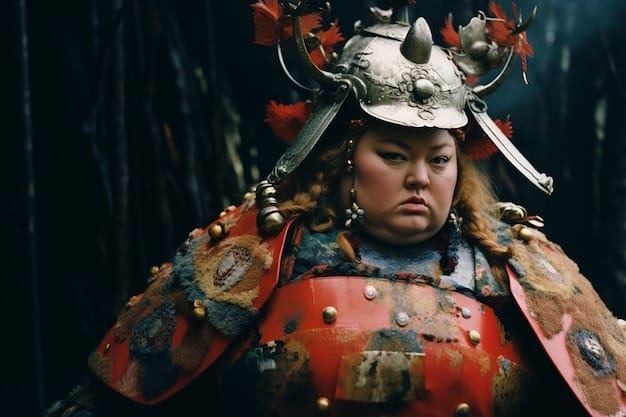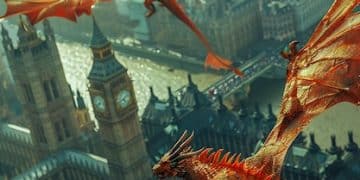Shogun Series Review: Is the Historical Epic Worth Watching?

Shogun is a gripping historical drama series that masterfully blends political intrigue, cultural immersion, and compelling character arcs, making it a must-watch for fans of epic storytelling and Japanese history.
The FX network’s new series, Shogun, has been generating buzz for its historical accuracy, stunning visuals, and captivating storyline. But does it live up to the hype? Let’s dive into a comprehensive review.
Shogun: A Historical Powerhouse Worth Your Time?
Shogun, adapted from James Clavell’s novel, transports viewers to feudal Japan, immersing them in the complex world of samurai, lords, and political machinations. The series promises a deep dive into historical events and cultural nuances. Does it deliver?
The initial episodes set the stage for a compelling narrative, introducing key characters and laying the groundwork for the conflicts to come. The attention to detail in costume design and set production reflects a genuine respect to recreating the historical context.
Immersive World-Building
One of its strengths lies in its immersive world-building. From the meticulously crafted costumes to the stunning landscapes, every detail contributes to bringing feudal Japan to life. The show doesn’t shy away from the complexities of the era, exploring the social hierarchies, political intrigues, and cultural traditions that defined Japanese society.
- Historical Accuracy: The series is praised for its commitment to portraying historical events and cultural practices accurately.
- Visual Spectacle: The cinematography captures the beauty and grandeur of feudal Japan, enhancing the viewing experience.
- Cultural Nuances: The show delves into the intricacies of Japanese customs, offering insights into the values and beliefs of the people.
That said, the world-building in “Shogun” is not just about visual appeal. It extends to the storytelling, where cultural misunderstandings and clashes become pivotal plot points. This focus enriches the narrative and deepens our understanding of the characters’ motivations.
In conclusion, this section of the Shogun series presents amazing historical building and a strong story for viewers.
Compelling Characters and Performances
At the heart of Shogun are its characters, each with their own motivations, ambitions, and flaws. The cast delivers outstanding performances, bringing depth and nuance to their roles.
The series explores the perspectives of both the English navigator, John Blackthorne, and the Japanese characters around him. This dual narrative allows viewers to gain a comprehensive understanding of the cultural clashes and power struggles at play.
Key Players in the Drama
The interactions between Blackthorne and the Japanese characters are complex and multifaceted. Language barriers, cultural differences, and political maneuvering create tension and uncertainty, keeping viewers on the edge of their seats.
- John Blackthorne: An English navigator who finds himself shipwrecked in Japan, becoming entangled in the country’s political struggles.
- Lord Toranaga: A powerful and enigmatic feudal lord who becomes Blackthorne’s ally and mentor.
- Lady Mariko: A noblewoman torn between her loyalty to her family and her growing affection for Blackthorne.
In addition to these main character explorations, the supporting cast helps to grow the story. Each character plays a crucial role in shaping the narrative, often challenging the protagonists and forcing them to make difficult choices.
In short, the depth of engagement with character development in the world of Shogun is an important plot point.
Political Intrigue and Power Struggles
A significant theme is the power struggles within feudal Japan. The series delves into the political complexities of the time, showcasing the rivalries, alliances, and betrayals that defined the era.
The struggle for control among the various feudal lords is a central conflict, which leads to schemes and battles as each faction seeks to gain the upper hand. The series maintains suspense through careful balancing of these elements.
The Battle for Supremacy
The series explores the various factions vying for power, each with their own agendas and strategies and their efforts to undermine their rivals and consolidate their own positions of power.
- Alliances and Betrayals: The series highlights the shifting alliances and betrayals that characterized the political landscape of feudal Japan.
- Strategic Maneuvering: The characters engage in complex strategic maneuvering, using diplomacy, manipulation, and warfare to achieve their goals.
- High Stakes: The stakes are high, as the fate of the country hangs in the balance, adding urgency and tension to the narrative.
In addition to the power struggles among the feudal lords, the series also examines the role of the emperor and the imperial court. The emperor, though largely a symbolic figure, exerts a subtle influence on the political landscape, and his favor is highly sought after.
Concluding this section, the political intrigue of feudal Japan is what makes Shogun an addictive show.
Cinematography and Visuals
The series is visually stunning, with breathtaking cinematography that captures the beauty and grandeur of feudal Japan. The use of natural light, combined with meticulously designed sets and costumes, creates a sense of authenticity and immerses viewers in the world of the show.
The battle sequences are particularly well-executed, with a combination of sweeping aerial shots and close-up action that keeps viewers engaged. The choreography is realistic and brutal, reflecting the violent nature of warfare in feudal Japan.
Bringing Feudal Japan to Life
The visual elements contribute significantly to the overall impact of the show, enhancing the storytelling and creating a memorable viewing experience. The attention to detail and commitment to authenticity are evident in every frame.
- Scenery: The series showcases the natural beauty of Japan, from the snow-capped mountains to the lush forests, providing a stunning backdrop for the drama.
- Costume Design: The costumes are meticulously crafted, reflecting the social status and personal style of the characters, adding depth and authenticity to the visual experience.
- Set Design: The sets are elaborate and detailed, recreating the architecture and interiors of feudal Japan, enhancing the sense of immersion.
One example of impressive visual storytelling is the way the series uses color. The vibrant reds and golds of the imperial court contrast sharply with the muted tones of the countryside, reflecting the different worlds and values of the characters.
The cinematography is what defines the show, and contributes to the overall greatness.
Cultural Sensitivity and Representation
The series navigates sensitive cultural issues with care and nuance, offering a nuanced portrayal of Japanese society and its values.
The show avoids stereotypes and clichés, presenting complex characters with their own motivations and perspectives. The series engages with important themes, such as honor, loyalty, and duty.
Beyond Stereotypes
The show challenges viewers to reconsider their assumptions about Japanese culture, offering insights into the complexities and contradictions of the era.
- Respectful Portrayal: The series treats Japanese culture with respect, avoiding caricature and simplistic representation.
- Diverse Perspectives: The show presents a variety of perspectives, allowing viewers to gain a deeper understanding of the characters and their motivations.
- Nuanced Storytelling: Storytelling that engages with the complexities and contradictions of feudal Japan.
The series also touches on the theme of cultural exchange, examining the impact of Western influence on Japanese society. The arrival of John Blackthorne disrupts the status quo, challenging traditional values and beliefs.
Ultimately, the series offers a nuanced and thought-provoking exploration of cultural interaction.
Pacing and Narrative Structure
The series unfolds at a deliberate pace, taking its time to establish characters, build suspense, and explore the complexities of the plot.
Some viewers may find the pacing slow at times, but this measured approach allows for a deeper immersion in the world of the show. Every scene is carefully crafted to contribute to the overall story, creating a sense of mounting tension.
A Methodical Approach
The series uses a non-linear narrative structure, jumping between different points of view and timelines to reveal information gradually. This approach adds a layer of complexity to the storytelling, keeping viewers engaged and forcing them to piece together the puzzle themselves.
- Deliberate Pacing: A measured approach that allows for deep exploration of characters and themes.
- Non-Linear Narrative: A complex structure that adds layers of intrigue to the storytelling.
- Mounting Tension: A sense of growing conflict as the plot unfolds.
The series also makes effective use of flashbacks, providing insights into the characters’ pasts and motivations. These flashbacks serve to deepen our understanding of the characters and add emotional weight to the present-day events.
In short, while some viewers may at times find the show to be slow, the pacing and use of narrative structure build to a great payoff.
Overall Impression
In conclusion, Shogun is a must-watch series for those interested in historical dramas and Japanese culture. Its immersive world-building, compelling characters, political intrigue, stunning visuals, and nuanced storytelling make it a truly captivating experience.
| Key Point | Brief Description |
|---|---|
| 🏯 Immersive World-Building | Detailed costumes and landscapes transport viewers to feudal Japan. |
| 🎭 Compelling Characters | Characters drive the show making it addictive. |
| ⚔️ Political Intrigue | Power stuggles of feudal Japan keep viewers engaged. |
| 🎬 Cinematography | Visuals are stunning and capture the beauty of feudal Japan. |
[Frequently Asked Questions]
▼
Generally, yes. Shogun is based on James Clavell’s novel, which is inspired by historical events and figures. The series strives for authenticity in its depiction of feudal Japan.
▼
Key characters include John Blackthorne, an English navigator; Lord Toranaga, a powerful feudal lord; and Lady Mariko, a noblewoman torn between loyalties.
▼
Shogun explores themes such as cultural clash, political intrigue, the nature of power, and the complexities of honor and loyalty in feudal Japan.
▼
Yes, especially if you enjoy historical dramas with rich detail, complex characters, and intense political maneuvering. It offers an immersive and captivating experience.
▼
Shogun is currently streaming on FX and Hulu. Check your local listings or streaming service for availability in your region.
Conclusion
Overall, Shogun is a triumph in historical drama. It combines beautiful cinematography with a gripping historical narrative to deliver a series that is both entertaining and engaging for viewers. It is an excellent watch.





